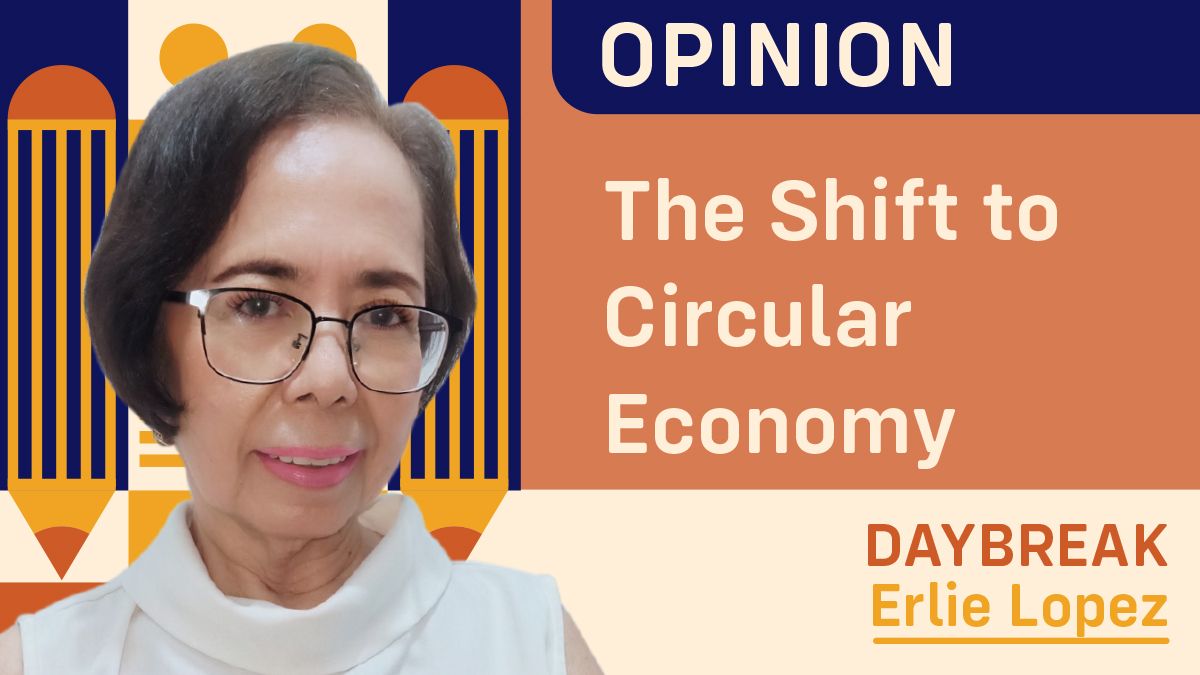Sustainable Development, Renewable Energy, Low-Carbon Lifestyle, and the latest buzz: Circular Economy. If you haven’t figured out yet, these are paradigm shifts called for in the recent decades due to the threatened state of the environment which impacts on the quality and quantity of Nature benefits to life, development, and the future.
Circular economy is a direct stand that the present linear system of “take-make-consume-throw” is wasteful and calls for change. Simply, CE is one that sees products and materials recycled, repaired and re-used, with waste in one industrial process becoming an input in another. Recall the familiar mantra for waste management, the 4 Rs – Reduce, Reuse, Recycle, Recover – and see it also as the basic principle of a circular economy.
An expanded definition, courtesy of the European Union Parliament, is as a model of production and consumption, which involves sharing, leasing, reusing, repairing, refurbishing and recycling existing materials and products as long as possible. In this way, the life cycle of products is extended.
Getting Good Support
Circular Economy is now well-adopted by many countries with Japan starting it in the 1990s, followed by China and the EU. Today, many governments support it with legislation and new practices. In 2020, the EU came up with its action plan for a circular economy with goals of protecting the environment, reducing raw materials dependence, creating more jobs (partly as it simulates innovation and competitiveness), and saving consumers money.
In the Philippines, the Circular Economy Act of 2020 calls for mainstreaming CE and sustainable consumption and production strategies; a just transition to a low-emissions and resource-efficient circular economy; and a zero-waste circular economy program and scheme. A CE revolution is even summoned due to the country’s high vulnerability to the grave consequences of climate change aggravated by its waste management problem. The Environment and Natural Resources and Trade and Industry departments are promoting the law, and so far, the business sector as a major implementor, is being quite responsive.
Business Taking the Lead
Coca-Cola Philippines, for one, with its World Without Waste program and PETValue Facility, a state-of-the art and end-to-end bottle recycling facility in Cavite, aims to collect bottles from various cities and reuse them for new production.
Unilever, a multinational consumer goods company, has implemented several initiatives to reduce waste and promote sustainability, like in the area of packaging. It has committed 25% reduction in packaging waste by 2025.
Large, medium, and small enterprises are following the trend in making products that are environment-friendly and applying circular business models. Examples are in recyclying of electronic waste, use of farm waste as building material, adopting circular fashion (like recycling and upcycling garments), cutting on paper packaging, and more.
Generally, circular economy practices involve saving common raw materials such as plastic, paper, metals, glass, fabric that have already been used for re-manufacture into a product’s old form or into a totally new product. Or gathering wastes such as consumed food and tree cuttings to be composted as natural plant fertilizers to achieve sustainable agriculture.
Organizations and individuals committed to protecting and conserving the environment for sustained benefit to the people and planet should find it easy to support the ongoing shift to a circular economy. And maybe, participate armed with innovative mind and competitive spirit. ###
Erlie Lopez is a writer, poet, PR consultant, and environment advocate.
Contact: erlielopez@gmail.com
#WeTakeAStand #OpinYon #OpinYonColumn #ColumnbyErlieLopez #Daybreak
